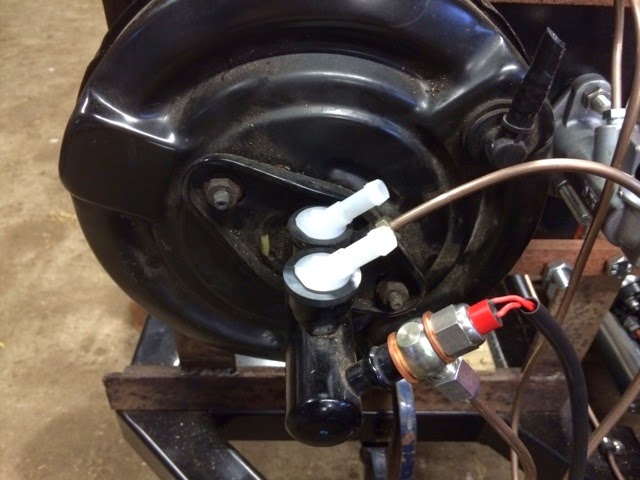We made up a small frame to mount the pedal box roughly where it would be inside the footwell
We the connected up the copper lines, making sure to leave enough to redo this once installed properly. It should be a much neater installation when done properly
I am using a brake light switch that is part of a banjo bolt. I am hoping this will be a better solution than some of the other hydraulic ones that can weep if they are not upright.
The clevis for the clutch cylinder was interesting. The first one I bought was too short, but I really struggled to find a longer one with a 5/16 female thread. Eventually found one on eBay that has the part number OBPCB005. This is long enough, but does cause the clutch pedal to stick out more than the brake pedal. Something to try and remedy at a later date.......



































